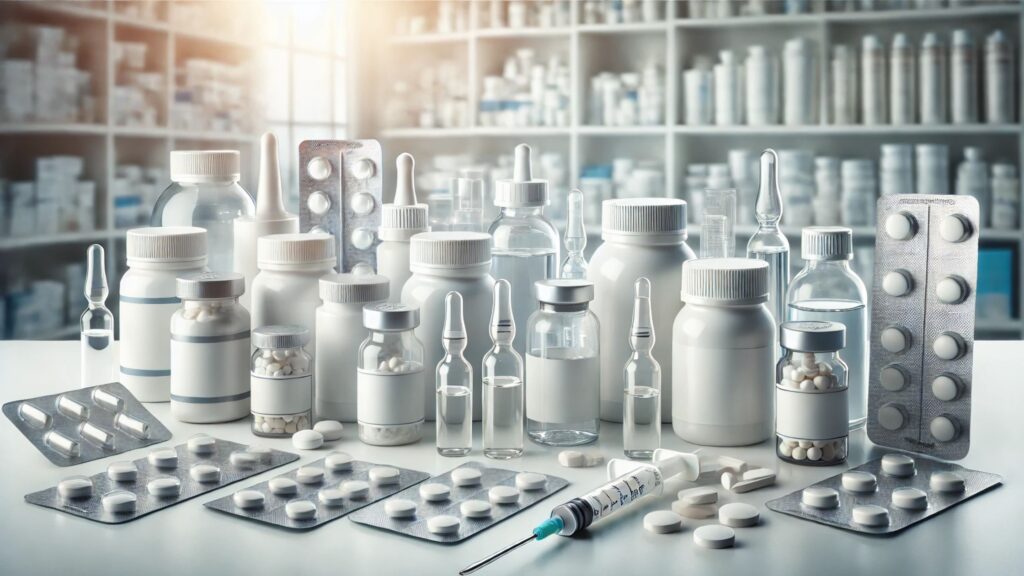Pharmaceutical packaging plays a crucial role in the healthcare industry. It serves as the first line of defense in protecting medications from contamination, degradation, and tampering while also ensuring patient safety and compliance. Proper pharmaceutical packaging enhances the stability, integrity, and usability of drugs, making it an essential aspect of drug delivery.
Key Functions of Pharmaceutical Packaging
- Protection Against External Factors
- Medications are highly sensitive to environmental factors such as moisture, light, and temperature. Pharmaceutical packaging safeguards drugs from these elements, preserving their efficacy and extending their shelf life.
- Tamper Evident Features
- Ensuring that pharmaceutical products remain secure until they reach the end user is vital. Tamper-evident packaging helps detect unauthorized access or contamination, ensuring consumer confidence and regulatory compliance.
- Accurate Labeling and Information
- Pharmaceutical packaging provides critical information, including dosage instructions, expiration dates, ingredients, and warnings. This helps healthcare professionals and patients use medications correctly and safely.
- Child-Resistant and Senior-Friendly Designs
- Safety is a top priority in pharmaceutical packaging. Many drug packages incorporate child-resistant closures to prevent accidental ingestion while also ensuring accessibility for elderly patients who may have difficulty opening standard packaging.
- Sustainability and Eco-Friendly Innovations
- The pharmaceutical industry is increasingly adopting sustainable packaging solutions, such as biodegradable materials, recyclable plastics, and reduced packaging waste, to minimize environmental impact.
Types of Pharmaceutical Packaging
Pharmaceutical packaging is categorized into three main types:
- Primary Packaging (direct contact with the drug)
- Blister packs, bottles, ampoules, vials, and pre-filled syringes
- Secondary Packaging (provides additional protection and branding)
- Cartons, boxes, and inserts
- Tertiary Packaging (bulk storage and transportation)
- Pallets, crates, and shrink wraps
Regulatory Considerations
Pharmaceutical packaging must comply with stringent regulatory standards set by organizations like the FDA, EMA, and WHO. These regulations ensure packaging materials are safe, non-reactive, and capable of maintaining the drug’s integrity throughout its lifecycle.
Future Trends in Pharmaceutical Packaging
- Smart Packaging: Integration of QR codes, NFC tags, and RFID technology to enhance patient engagement, track authenticity, and provide real-time information.
- Personalized Packaging: Custom designs tailored to specific patient needs, ensuring better adherence to medication regimens.
- Advanced Barrier Materials: Development of high-performance packaging materials to improve drug stability and extend shelf life.
Conclusion
Pharmaceutical packaging is much more than just a container—it is a critical component of drug safety, compliance, and effectiveness. As technology and sustainability initiatives evolve, the industry continues to innovate, ensuring better healthcare outcomes for patients worldwide. Ensuring the right pharmaceutical packaging is used is essential for maintaining drug quality and patient safety, making it a fundamental aspect of the pharmaceutical supply chain.
Related Articles
- The Art and Science of Packaging | Trends, History & Future
- The Ultimate Guide to Cookie Packaging: Tips, Trends, and Creative Ideas
- Plastic Packaging: Benefits, Drawbacks & Sustainable Alternatives
- The Growing Importance of Cardboard Packaging in a Sustainable World
- The Art and Science of Coffee Packaging: Preserving Freshness and Enhancing Branding
- Biodegradable Packaging: A Sustainable Solution for a Greener Future
- The Power of Product Packaging: More Than Just a Box
- Eco Friendly Packaging: Sustainable Solutions for a Greener Future
- Food Packaging Design: Trends, Tips & Best Practices
- The Ultimate Guide to Food Packaging Machines: Enhancing Efficiency and Safety

